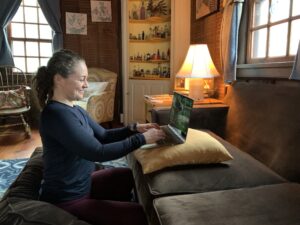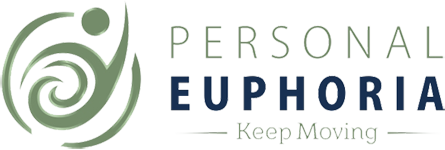July 26th commemorates the day the American Disabilities Act was signed. It reminds us of actions put in place to help create independence for people with disabilities. According to the CDC 1 in 4 US adults has a disability while 1 in 7 has a physical disability that impairs mobility.
Those are the statistics, but people are more that data. We are all in need of regular movement for optical health and independence. The general guidelines for exercise (30-minutes of moderate movement a day) is the same for everyone. But exercise can be much more daunting when you live with a physical disability.
What are the options when movement can pose additional challenges?
Water
Get in a pool or a body of water. Water is a great place for many different types of disabilities or pain. My father-in-law had a type of muscular dystrophy (Charcot-Marie-Tooth) and he was a different person in the pool. Not only can the water enable the body to feel great, but it also creates resistance so we can get good strength work and even cardiovascular work.
Walk
I’m not sure we all think of waking as counting as exercise. Often people think if they aren’t working at the level of an athlete and doing a grueling workout, what’s the point of even trying. While many people with disabilities are athletes, everyone can start at their own level. And walking CERTAINLY counts. Building up to 1-3 miles a day is key for everyone. If you need tools to assist you that’s okay.
Micro-Moves
No move is too small. Even wiggling your fingers and toes can make a difference. First it can help you become more attuned to your body. It’s important to notice what movement you have, as subtle as it may be. There are whole methods of movement all about moving as subtly and as a minute amount as possible. It can be hard work to keep movement small. And there is a lot to learn about the body when you make super subtle changes. You can move any part minimally (it doesn’t have to be fingers and toes), but if you move the hands and feet, you help the blood pump (it’s a long way from the heart to the feet so a little movement helps with circulation). Any part your move helps the whole system.
Chair Classes
Chair classes are a great option for anyone concerned about balance or who has a disability that impacts their legs. You can start small and do the micro-movements above from the safety of a chair. Or you can do bigger moves. There’s a number of great stretches you can do from a chair (see video below for two). If you have movement of your legs you can rebuild strength from a chair, doing a variety of leg work. And you can also get cardio gains. Move your arms quickly. Consider fake sparring and pretend you are in a boxing ring. Or turn on your favorite music and pretend to be a maestro. Act the part of conductor as passionately as you can. You’ll get great arm work and you’ll boost your heart rate.
Communicate
If you search online you can find an assortment of classes geared to all different needs. If you don’t find something that could meet your needs, reach out to a local gym, physical therapist, or studio and see if they could add a style of class you’d like to see. They may or may not be able to do that.
Also, let any fitness professional you are working with know what concerns you have, what your struggles are, and don’t feel you can’t point out your strengths too. It’s not bragging. Talking about your body will help anyone you are working with help you more.
We all require movement. Luckily there are lots of options and possibilities. While a physical disability can make movement more daunting, everyone can have a tough time getting motivated to move. Let’s motivate each other. If you have a friend who struggles with movement, maybe reach out to find a way to move together. If you know someone who could move more ask them to join you on your movement journey. Be each other’s encouragement buddy (or maybe their distraction buddy providing good conversation while you both move).
Movement is a privilege. On days I don’t feel like working out I think of my Grandma who was in a wheelchair by her mid-thirties. The wheelchair was a tool that provided movement she otherwise would not have had, but she could not get up and walk whenever she wanted. I can. I try not to take movement for granted.
Movement can be hard for lots of different reasons—pain, depression, or a physical disability. We all have our different strengths and struggles to overcome with movement. But if we can find a movement that works for us and a movement partner we trust and that encourages us, we call all make great strides together.
CT Live
Keep Reading
Want to know how to walk for your health? Take a walk with Maggie outdoors!
Want to keep moving from your desk? See what micro moves you can do sitting down here!
Keep Connected
Order Your Copy of Keep Moving Today!
Subscribe to the Keep Moving Blog
Like the Personal Euphoria Facebook page
Find us on Twitter
Follow me on Instagram
Subscribe to my YouTube Channel
